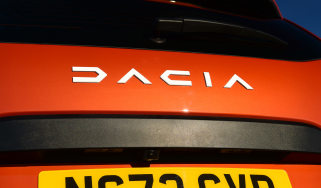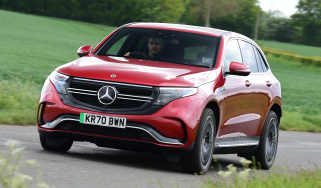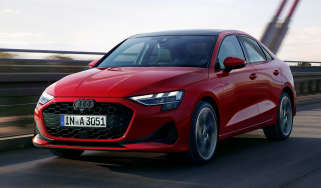Electric cars vs hydrogen cars: exclusive real-world analysis
Transport for London and the Metropolitan Police run hydrogen, electric and conventional vehicles – but which are they using most?

Hydrogen cars run by Transport for London (TfL) are used significantly more than equivalent petrol and diesel models, new research has revealed. And electric vehicles (EVs) run by TfL and the Metropolitan Police are covering far fewer miles than those with internal-combustion engines (ICEs). The organisations use 25 hydrogen Toyota Mirais and 109 pure-electric cars and vans between them.
Freedom-of-Information data shows TfL is covering 47.51 per cent more miles in its Mirais than in its ICE cars, with the Met’s ones used a fifth less than its petrol and diesel vehicles. But the organisations’ EVs are being used significantly less than petrol and diesel vehicles.
Toyota told us it was “pleased but not surprised” with the Mirai’s performance, adding hydrogen is a “viable and practical solution offering the familiar usage pattern of a petrol or diesel, but with none of the tailpipe emissions.” Yet Tom Callow, of BP Chargemaster, said: “We’d be surprised if any fleet operator was using its EVs less than any other fuel type, unless they had deployed them for restricted-mileage duties. They really shouldn’t need to, given the range of the latest EVs on the market.”
Transport for London
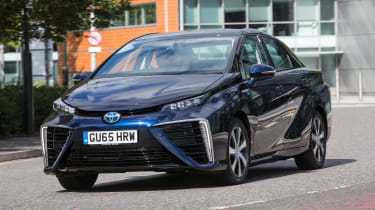
Transport for London uses four hydrogen Mirais in ‘vehicle logistic’ roles, and to support the London bus fleet. These cover 5,605 miles a year on average – around 48 per cent further than equivalent petrol and diesel TfL cars.
Toyota Mirai used more
TfL said refuelling the Mirais was “initially problematic”. However, this became easier as more hydrogen filling stations were introduced, with the organisation now refilling at stations in Teddington, Hendon, Beaconsfield, Rainham and Heathrow. TfL reported no significant issues with the Mirai, while Auto Express understands that the organisation leases each car for £500 to £600 per month.
Electric vehicles used less
The 18 pure-electric cars that TfL runs includes Citroen Berlingo Electrics, Nissan Leafs, Renault Kangoo ZEs and Mitsubishi i-MiEVs. These cover 3,239 miles each year on average – 46.1 per cent less than TfL’s equivalent petrol or diesel vehicles.
TfL told us that while “there have been no difficulties in terms of vehicle utilisation” with its Mirais, it considered that “EVs are still limited by the availability of charging infrastructure, and as a result may not always be able to complete the journeys a petrol or diesel vehicle could because of a lack of charging points in the local vicinity.” TfL has so far installed 184 EV charging points in London, with 300 set to be in operation by 2020.
Hydrogen vehicles - average use
| Toyota Mirai TfL average mileage | Petrol and diesel TfL average mileage | Mirai used more or less than petrol and diesel vehicles by TfL? |
| 5,606 | 3,800 | 47.51% more |
Electric vehicles - average use
| EV TfL average mileage | Petrol and diesel TfL average mileage | EVs used more or less than petrol and diesel vehicles by TfL? |
| 3,239 | 6,000* | 46% less |
*Between 5,000 and 7,000 miles
London’s Met Police
London’s Metropolitan Police runs 19 Mirais, which are used as marked and unmarked response cars, and as non-response general cars. These Toyotas are “allocated to areas of London near to existing hydrogen refuelling sites”. The Met’s marked Mirai response cars are used the most; covering only 8.6 per cent fewer miles than petrol and diesel marked response cars.
Police electric vehicles
In addition, the Met runs a fleet of 50 Nissan e-NV200 electric vans, which it uses to transport equipment, and 41 Nissan Leafs, which it uses as non-response cars. On average, these are driven 53.53 per cent less than equivalent petrol and diesel vehicles.
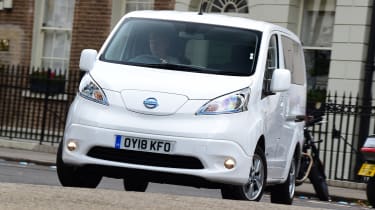
Meanwhile, the Met covers an average of 3,707 miles a year in each of its Leafs, compared with 10,220 miles a year in an equivalent petrol or diesel car. This means Leafs are used 63.75 per cent less than equivalent police cars with an internal-combustion engine.
The Met’s e-NV200 electric vans each average 2,501 miles annually. The force said the average mileage for diesel vans in this role would be 3,139 miles a year, meaning the e-NV200s are used 20.31 per cent less than conventional vans.
Electric scooters
The Met also runs 11 electric BMW C Evolution scooters. These each cover 3,739 miles a year – a virtually identical number of miles covered by equivalent petrol scooters, at 3,763 miles.
The Met reported that it had no issues using its EVs, and told us it’s been “actively exploring ways to hybridise and electrify our fleet” since 2015. Its Mirais are used “to support policing in London and are helping to support the Mayor of London’s clean air strategy”.
Hydrogen vehicles - average use
| Toyota Mirai Met average mileage | Petrol and diesel Met average mileage | Mirai used more or less than petrol and diesel vehicles by Met? |
| 12,502.50 | 15,815 | 20.95% less |
Electric vehicles - average use
| EV Met average mileage | Petrol and diesel Met average mileage | EVs used more or less than petrol and diesel vehicles by Met? |
| 3,315.30 | 5,707.50 | 41.91% less |
What about hydrogen taxis?
Taxi firm Green Tomato Cars runs 25 hydrogen Mirais, with another 25 arriving soon. MD Jonny Goldstone says the Toyotas cover 110 miles a day, being used “interchangeably” with other cabs and covering just as many bookings as the firm’s Toyota Prius hybrid taxis.
The Mirais are refuelled in three minutes every two days. Goldstone said hydrogen cars offer “ICE-like range with similarly minimal refuelling or charging times”, with quick refuelling “key to the viability of zero-emission vehicles in our industry”.
He added: “We expect the future of zero-emission transport in London and beyond to entail a mix of vehicle types for different uses. We can’t see how fuel-cell EVs won’t play a significant role.”
What do you make of our exclusive findings? Let us know your thoughts in the comments below...

